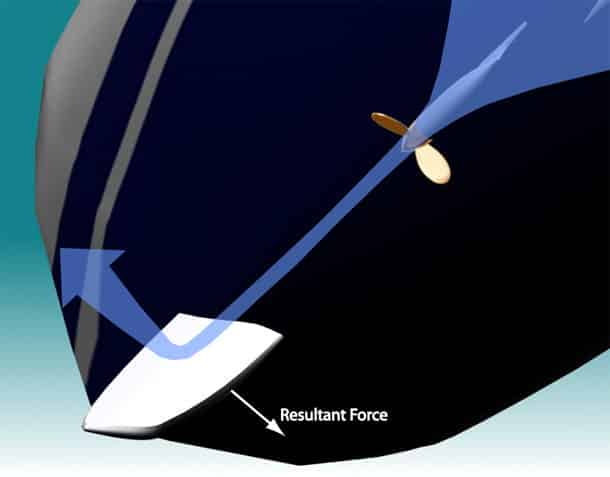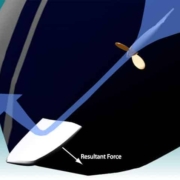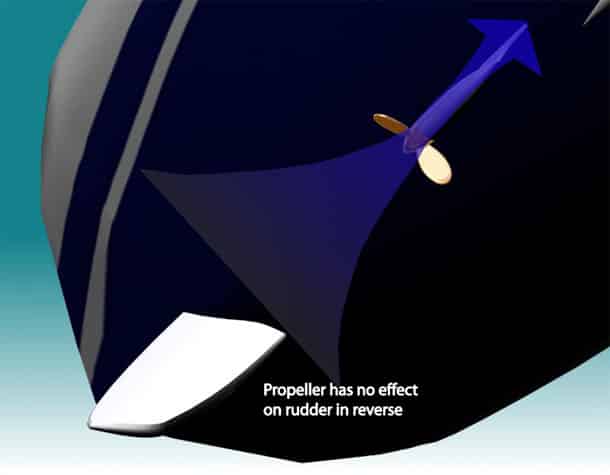Sailboat Maneuvering Topics
Wind Strength and Current
With practice, wind direction and current direction are not too much of a problem. But what can get you into trouble is extremely high winds. Be prepared to change your plan and dock up at a more favorable dock situation should this be the case. Every marina owner would rather you safely dock your boat on an end tie or other place rather than risk you losing control and banging into another boat.
Maneuvering a boat requires expertise. You gain this from learning the theory of the skills and applying it many times in practice. You cannot assume that because you can drive a car you can expertly drive a boat. The differences are substantial.
Considerations:
- Prop walk
- Wind direction and current
- Water flow over the rudder and how that affects responsiveness
- Your rudder is at the aft of your vessel. Unlike a car where the turning wheels are forward.
- The momentum of the vessel and how long it takes to stop when in forward and when in reverse. There are no brakes.
Motoring Forward
Force on the rudder from water flowing over the rudder acts to turn the boat. The effectiveness of the rudder is proportional to the square of the water flow rate over the rudder. If there is no water, there is no turning. Double the flow rate will give you 4 times the turning force.
When sailing, the speed of the boat is the speed of water flowing over the rudder. When engaging forward gear, the propeller pushes high-velocity water over the rudder. This greatly enhances your ability to turn the boat. This picture illustrates how this happens.

Maneuvering in Forward
Thus even when the boat is standing still, you can turn the boat by turning the rudder and engaging forward gear for a very short time. This becomes a very effective tool to maneuver your boat without gaining any appreciable velocity.
When moving forward through the water and using forward gear, more water is flowing over the rudder, making the rudder even more effective.
Motoring in Reverse
Backing a sailboat is rather easy but seems intimidating. You must realize that when reversing, the water flow over the rudder comes only from the movement of the boat through the water, None comes from propeller wash. Thus you actually have to be moving backward before the rudder can be effective.
Additionally, keep in mind that the curves on the blades of the propeller are designed to operate most efficiently forward. Therefore, stopping a boat moving in reverse takes only a little touch forward. The complete opposite is true when moving forward and trying to stop the boat. Significantly more time is required to stop the forward movement of the boat when the reverse is engaged. The best way to get used to this is to try it out yourself in open water. Practice makes perfect.
Other factors to consider include current and wind flow and directions relative to the boat. These factors greatly affect your ability to maneuver in reverse.
Wind always wants to push the bow of the boat downwind. Thus the best way to gain control of your boat when starting from zero speed and desiring to go backward is to face the stern of the boat to windward. This prevents the wind from pushing your boat around until you gain steerage control by water flow over the rudder.
Maneuvering in Reverse
Prop Walk
Prop walk is caused by the tilt of the propeller shaft and occurs when the propeller is turning prior to the vessel making headway or sternway. Without going into too much theory about how the prop walk phenomenon occurs, it suffices to say that prop walk moves the stern of the boat sideways to port every time reverse is engaged (this is true for most boats). A full explanation of how the non-incident angle of water flow through the propeller creates a longitudinal torque (prop walk) is described in the NauticEd’s Maneuver and Docking Your Sailboat Under Power.
Dealing with prop walk is relatively easy. We call it a preemptive strike. Prop walk is only a nuisance when you start from zero speed. Once the boat starts gaining sternway (moving backward) the effectiveness of water flow over the rudder takes over and you now have full control of the boat. Thus, if you know your boat will turn 30 degrees clockwise when you engage reverse from a standstill, then start a further 30 degrees off your desired track. It’s as simple as that.
When reversing into a slip, be aware that if you stop the boat’s movement because you screwed up the docking maneuver, when you go to start again in reverse, the boat will screw clockwise again, which will further screw up your docking maneuver. Thus, don’t stop your momentum and expect to recover. Instead, you will need to do a “go around.” That’s a pilot talk for aborting the landing and circling the airfield for another try.








